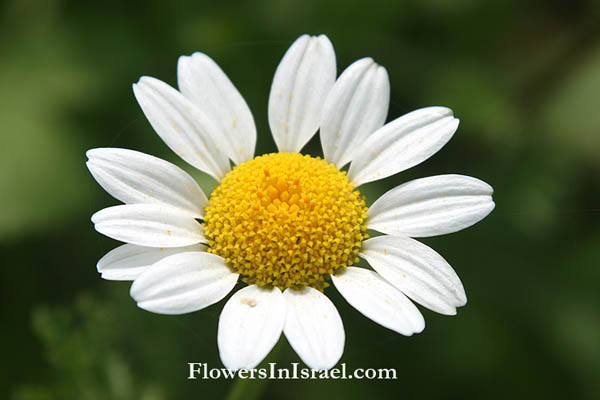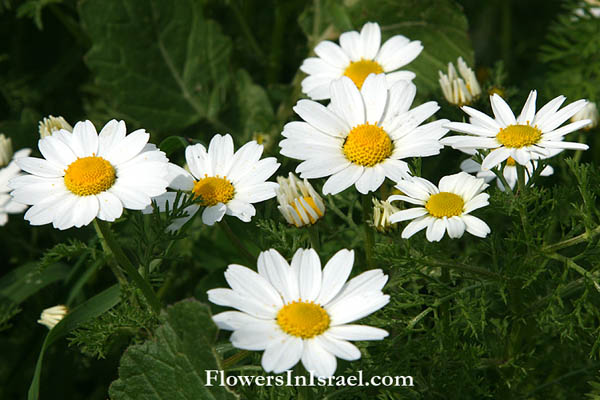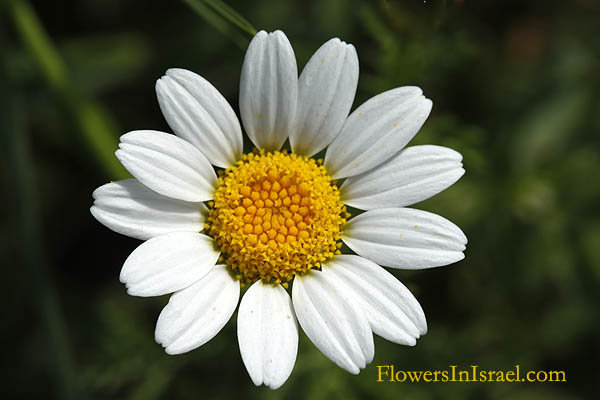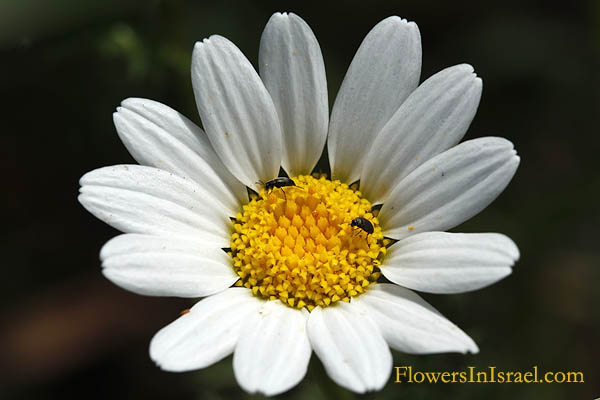Hebrew: קחוון מצוי, Arabic: قَحْوان كاذِب, Egypt: اربيان "Erbyyan"
| Scientific name: | Anthemis pseudocotula Boiss. | |
| Common name: | Common Chamomile | |
| Hebrew name: | קחוון מצוי | |
| Arabic name: | قَحْوان كاذِب | |
| Egypt: | اربيان "Erbyyan" | |
| Family: | Compositae / Asteraceae, מורכבים |

|
| Life form: | Annual | |
| Stems: | 15-50 cm tall, pubescent or tomentose herb with erect or ascending shoots from the base | |
| Leaves: | Alternate, dissected twice or more | |
| Flowers: | Ray flowers white, disc flowers yellow | |
| Fruits / pods: | Cypselas turbinate-obpyramidate, ± tetragonous, 1-1.5 mm long, distinctly 10-ribbed, oblique, truncate or rounded at the apices, auricle absent or nearly up to half as long as achene | |
| Flowering Period: | March, April, May | |
| Habitat: | Batha, Phrygana, Shrub-steppes, Desert | |
| Distribution: | Mediterranean Woodlands and Shrublands, Semi-steppe shrublands, Shrub-steppes, Deserts and extreme deserts, Montane vegetation of Mt. Hermon | |
| Chorotype: | Med - Irano-Turanian - Saharo-Arabian | |
| Summer shedding: | Ephemeral |

Derivation of the botanical name: Anthemis. Chamomile. From Greek chamos, "ground", melos, "apple." Anthemis is the Greek name for this plant which has a long history, as a flavoring herb and in medicine. pseudocotula, pseudes, ψευδηϛ, "false, untrue", cotula (Greek), "small cup". The Hebrew word: קחוון, kahvan from Arabic, أقحوان,'aqhawan, קחואן.





|